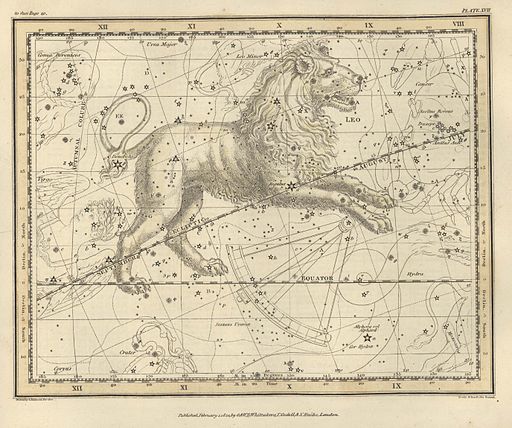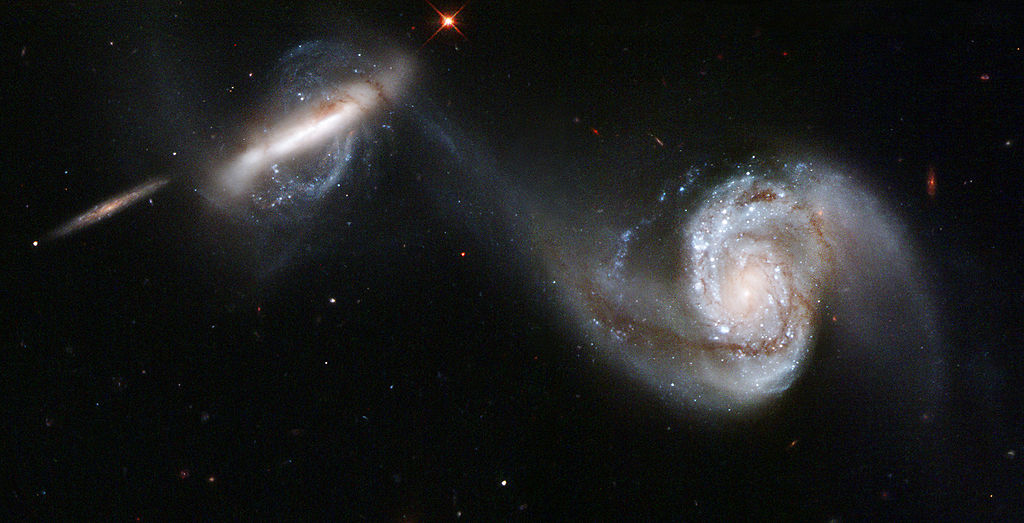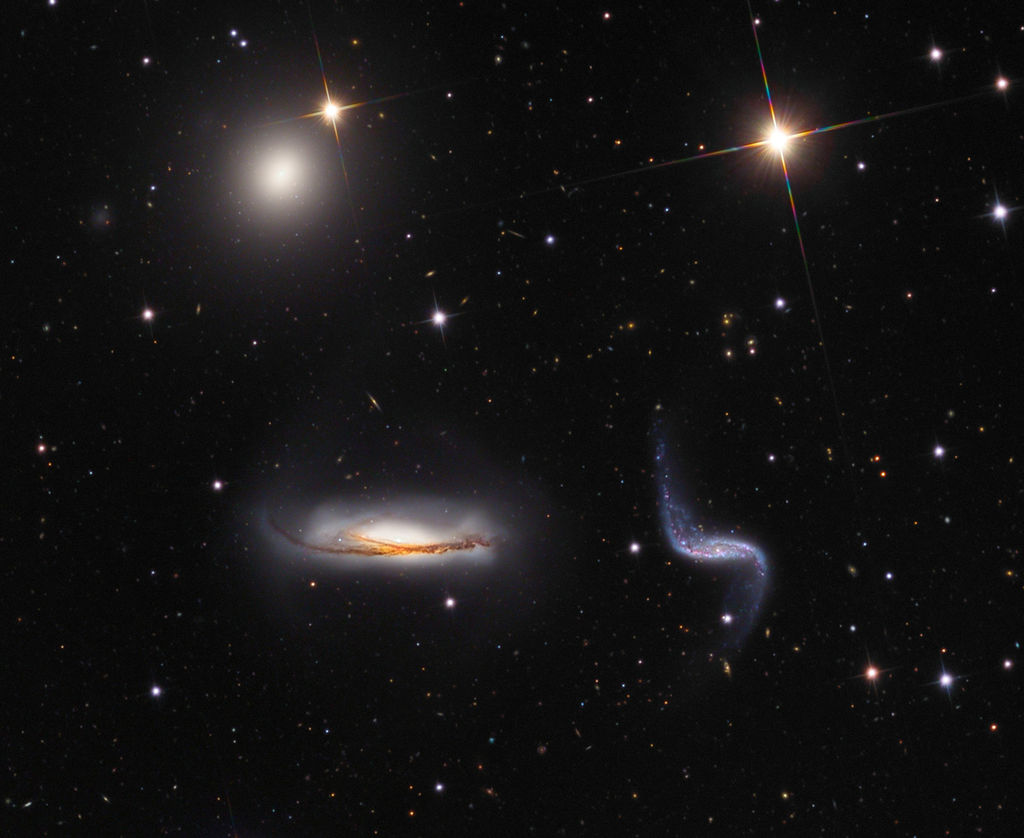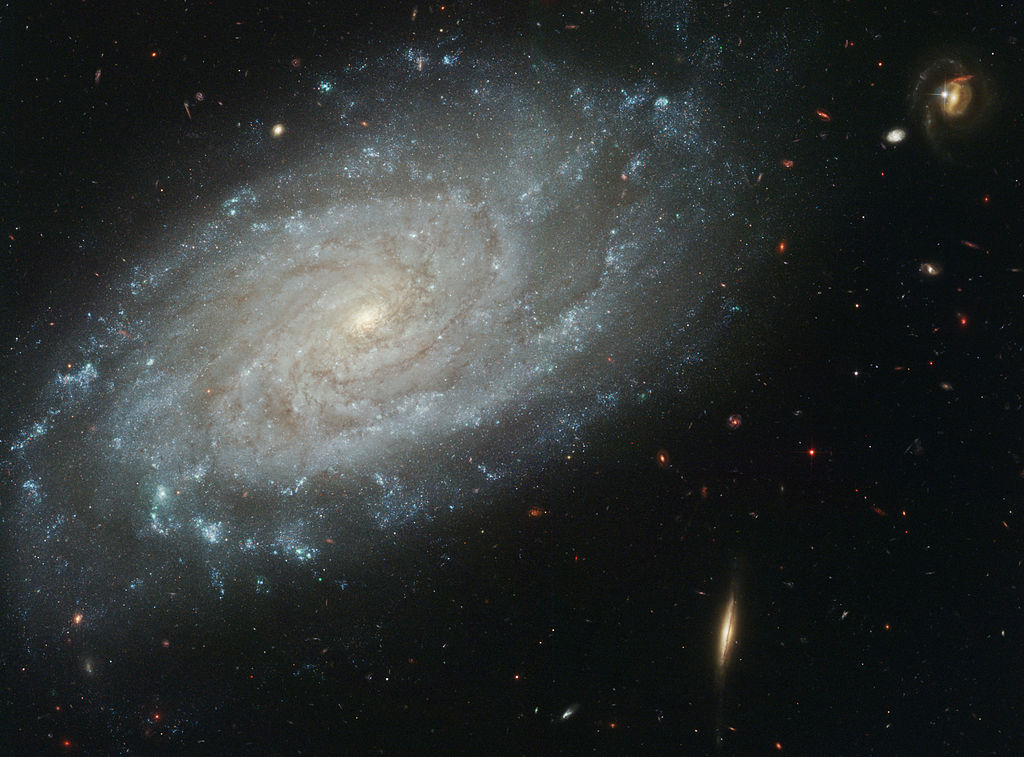
By IAU and Sky & Telescope magazine (Roger Sinnott & Rick Fienberg) [CC-BY-3.0], via Wikimedia Commons
"The Lion"

By IAU and Sky & Telescope magazine (Roger Sinnott & Rick Fienberg) [CC-BY-3.0], via Wikimedia Commons
Abbreviation: Leo
Genitive: Leonis
Constellation family: Zodiac
Nearest constellations: Cancer, Coma Berenices, Crater,
Hydra, Leo Minor, Lynx, Sextans,
Ursa Major, and Virgo
Right ascension: 10.66h
Declination: 16.45°
Visible between latitudes: +90° and -65°
Square degrees: 947
Luminary: Regulus (Alpha Leonis)
Named stars: Regulus, Denebola, Adhafera, Zosma
Notable deep sky objects: M65, M66, M95, M96, M105, Wolf 359, Leo Ring
Leo is a large constellation in the Northern Hemisphere that is best seen in April.
Leo is home to the Leonid meteor shower, an annual meteor shower that typically begins on November 13 and ends on November 21, peaking around November 17-18. Up to 20 meteors per hour can be seen at the shower's peak.

By Alexander Jamieson (United States Naval Observatory Library) [Public domain], via Wikimedia Commons
This constellation contains the star Wolf 359, which is a red dwarf star and the fifth-closest star to Earth, not including the Sun and after the stars in the Alpha Centauri system and Barnard's Star in Ophiuchus. Wolf 359 is about 16% of the size of the Sun and is also quite dim, having a luminosity equivalent to about 10 full moons. Wolf 359 is probably best known in popular culture for being close to the location of a human-Borg battle in the TV series Star Trek.
In astrology, Leo is the fifth constellation of the zodiac.
In Greek mythology, Leo represents the Nemean Lion, one of the monsters killed by Hercules (also known as Heracles) as one of his twelve labors. The lion could not be killed with iron, bronze, or stone weapons, so Hercules strangled the animal to death. Afterwards, he took the pelt as a trophy.
Arp 87 (interacting galaxies):

By NASA/Hubble [Public domain], via Wikimedia Commons
NGC 3455 (spiral galaxy):

By ESA/Hubble [CC-BY-3.0], via Wikimedia Commons
NGC 3187, NGC 3190, and NGC 3193 (group of galaxies):

By Adam Block/Mount Lemmon SkyCenter/University of Arizona [CC-BY-SA-3.0-us], via Wikimedia Commons
NGC 3370 (spiral galaxy):

By NASA/ESA, The Hubble Heritage Team and A. Riess (STScI) [CC-BY-3.0], via ESA/Hubble
NGC 3368 (another spiral galaxy):
